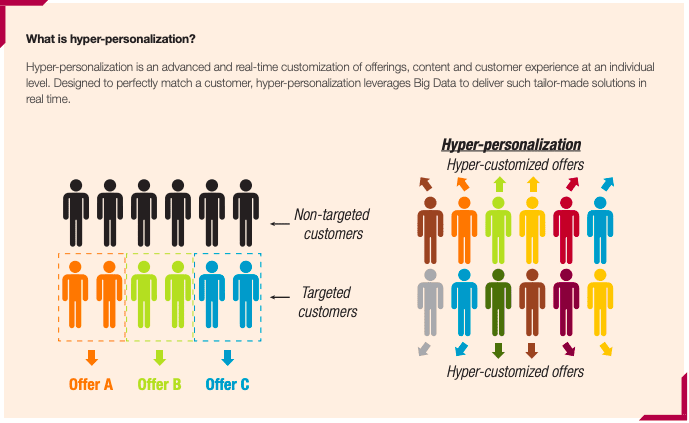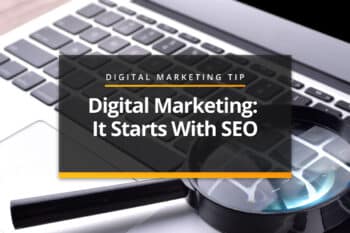
Despite the growing percentages of consumers who are concerned about their data privacy (86% according to Smart Insights), 72% of consumers say they will now only engage with digital marketing messages that are personalized and tailored to their interests. When you pair that statistic with one found in this recent HubSpot report: “Personalized calls to action perform 202% better than basic CTAs”, it would be foolish to ignore the importance of personalization.
Hyper-personalization vs. personalization. What’s the difference?
By 2020, customer experience will overtake price and product as the key brand differentiator, according to Frost & Sullivan. Consumers don’t just want personalization, they expect personalization, and they are no longer just connected — they are hyperconnected.
Personalization tailors communication based on basic information like customer’s name, location or purchase history. For example, using your customer’s name in marketing campaigns would qualify as personalization, but that alone will no longer cut it.
Hyper-personalization dives deeper into real-time data like browsing behavior, device usage, interests and more to communicate custom messages and offers unique to the individual.

Image: Capgemini
You’re a hyper-personalization believer, now what?
For marketing messages to be hyper-personalized, they need to be built to happen in real-time. Your marketing message should change depending where consumers open the message, what’s happening around them (like weather, for example), their stage in your product lifecycle, etc. This could produce hundreds (if not thousands) of marketing messages across your customer base.
Start by keeping it simple.
- Know your customers. Identify the variables in your customer demographics and behaviors that matter most to you.
- Collect customer data. Your campaigns are only as good as the data coming in. Tie your data to the variables that matter most in your customer personas. But remember, consumers demand transparency in data collection.
- Customize your offers. According to Marketo, nearly 79% of consumers will likely only engage with a brand’s offer if it is directly tied to their previous interactions with the brand.
- Create personalized messaging. Consider variable CTA’s if they are a new vs. returning customer, content that changes based on where and when an email is opened, etc.
- Use carefully crafted timing and automation. You can’t do this alone. Work with a team or platform to automate your marketing messages.
- TEST, TEST, TEST.
We’ll help you take your next steps in hyper-personalization.
You’re not in it alone. Take the next step in your personalization journey and talk to us about your digital marketing goals. Talk to a strategist today!
Most Popular Articles

Seeing Favicons in Your Google Search Results? Here’s Why…
Have you noticed anything different in your Google Search results lately? Google added tiny favicon icons to its organic search results in January. It was…

Business Growth and Digital Marketing News & Tips 11-17-24
Are you encouraging and rewarding innovation? Lee Cockerell is the former Executive Vice President of Operations at Walt Disney World. A lover of traditional red…

Business Growth and Digital Marketing News & Tips 11-27-24
A culture of gratitude "Feeling gratitude and not expressing it is like wrapping a present and not giving it." – William Arthur Ward Beyond being…








